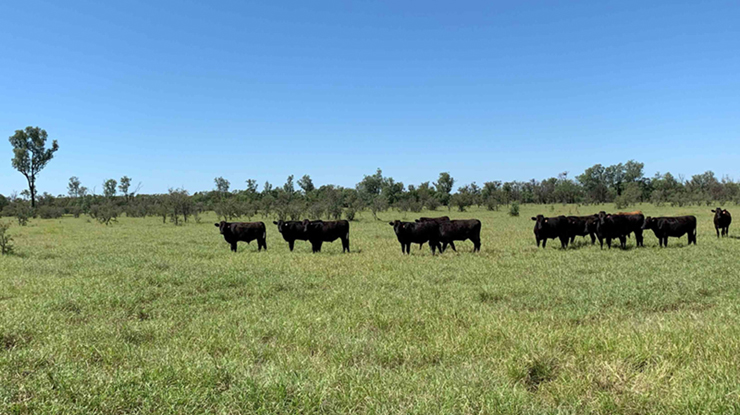Bars represent mean densities of CMBS October and March, while dots represent per plant densities of CMBS. Lines connecting the dots represent the change in CMBS densities on individual plants between October and March, providing insight into the potential for winter population growth. For plants that had the same densities and the same change in densities between October and March, there may be multiple plants represented by the same dot and line. | Example of Crapemyrtle Bark Scale CMBS Courtesy of Caitlin Littlejohn and Amber Stiller |
Charlotte, NC: Crapemyrtle Bark Scale (CMBS), a pest affecting the economically and aesthetically important crapemyrtle trees, poses both economic and environmental concerns. With an estimated wholesale value of crapemyrtle exceeding $65 million and additional costs for pest management, CMBS has significant financial implications. The pest has also been observed feeding on native plants like American beautyberry and cultivated species such as pomegranate and spirea, raising concerns about its expanding host range and potential damage to native ecosystems.
CMBS is challenging to manage due to its cryptic life cycle, rapid reproduction, and ability to produce multiple generations annually, particularly in warmer climates. During winter, CMBS primarily overwinters as settled crawlers, but its activity during plant dormancy, such as egg hatch and crawler movement, remains understudied.
A recent study by researchers at Utah State University aims to characterize CMBS crawler activity in autumn and winter and assess the influence of temperature and heat accumulation. This research seeks to guide winter pest management strategies, promoting pesticide applications when CMBS populations are lower, thereby reducing the risk of spring infestations and spread in nursery settings. Additionally, the study enhances understanding of CMBS winter biology and its potential for population growth during colder months.
Recommended Management Strategies
Pruning and Removal: Heavily infested branches can be pruned to reduce pest populations. Proper disposal of cuttings is essential to prevent further spread.
Cleaning Bark: Gently scrubbing the bark with a soft brush can help remove visible pests and their egg sacs, reducing the overwintering population.
Insecticide Application: Dormant oil sprays can be applied during the winter months to suffocate overwintering pests. Always follow product labels for safe and effective use.
By addressing infestations during the winter, property owners can reduce the likelihood of severe outbreaks in the spring and help preserve the beauty and health of their landscapes.
This study was conducted at the Bartlett Tree Research Laboratory in Charlotte, NC with contributions from Erika Wright, Amber Stiller, Caitlin Littlejohn, and Drs. Kevin Chase and Sam Ward.
The authors undertook this study because they were seeing CMBS activity on artificially-infested plants from previous studies late into the fall, and they wanted to quantify how late into the season CMBS were active.
The full story can be found on the ASHS HortScience electronic journal website at:
Established in 1903, the American Society for Horticultural Science is recognized around the world as one of the most respected and influential professional societies for horticultural scientists. ASHS is committed to promoting and encouraging national and international interest in scientific research and education in all branches of horticulture.
Comprised of thousands of members worldwide, ASHS represents a broad cross-section of the horticultural community – scientists, educators, students, landscape and turf managers, government, extension agents and industry professionals. ASHS members focus on practices and problems in horticulture: breeding, propagation, production and management, harvesting, handling and storage, processing, marketing and use of horticultural plants and products. To learn more, visit ashs.org.







